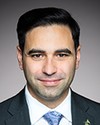It's nice to be in a committee again with you, Mr. Chair. Congratulations on your role. I'm looking forward to working with you again.
Thank you to the witnesses for taking the time to be here this morning.
I want to read from the report what appears to be one of the key findings. It's a message that we've heard here today, but I'll still refer to it. It states as follows:
Overall, we found that the government had not developed a national emergency preparedness and response plan that considered a crisis affecting the entire food system and Canada's food security. This is despite...having identified food as a critical infrastructure sector since 2009.
I absolutely understand that, but then it continues:
Nevertheless, we found that the responsible departments and agencies we examined drew on existing programs and mechanisms to expedite the creation of the new emergency food programs.
My question is for Deputy Auditor General Hayes.
With that in mind, and keeping in mind, of course, that Canada is a large country, the second biggest in the world and a huge federation, maybe it makes sense that we don't have a national emergency plan. This is not a judgment; I'm looking for a perspective here. Maybe these things should be organized at a provincial level, because as it says here, “we found that the responsible departments and agencies we examined drew on existing programs..”. Where existing programs are in place, it sounds like they were able to do what was needed to address existing programs.
Of course, there are gaps, and the report identifies those gaps. There are serious gaps as well. Some are less concerning and some are more concerning.
We can talk about the specifics there, but it's a question around first principles. In a country as large as Canada, does it make sense to have a national plan, one that would apply to the entire country but carry with it obvious risks of one size not fitting all problems? Or, do we try to work at a more focused level, through different agencies and departments that are already in existence—and with provincial governments where necessary—and have plans and seek to refine those plans?




